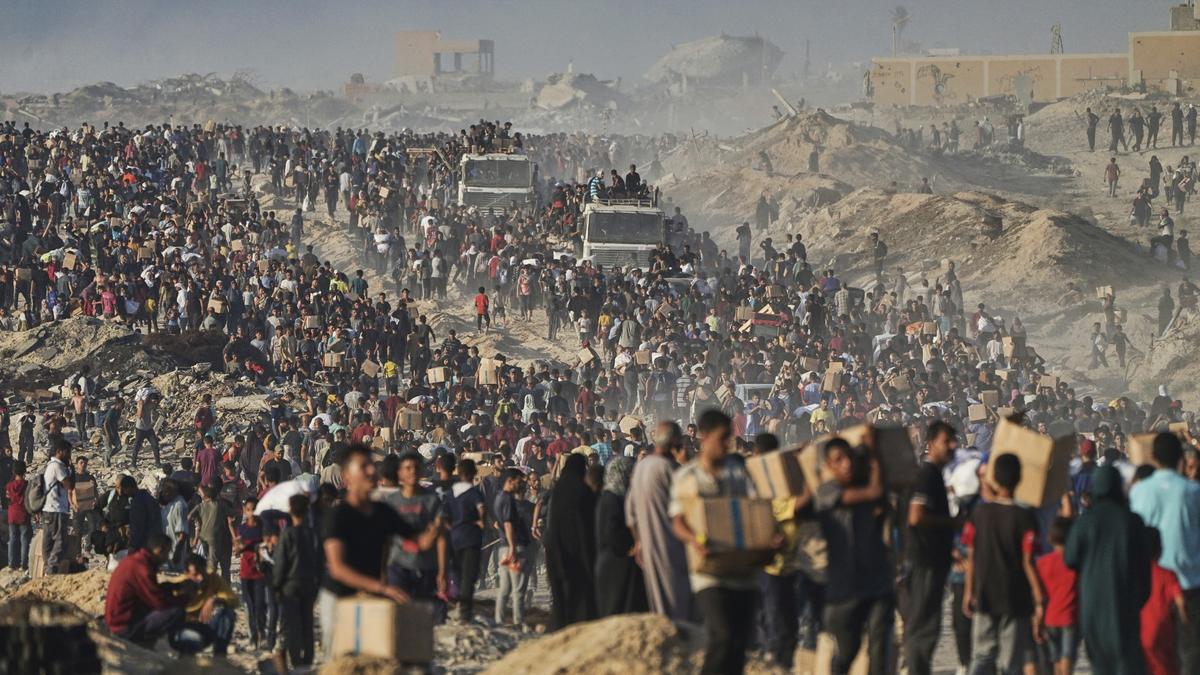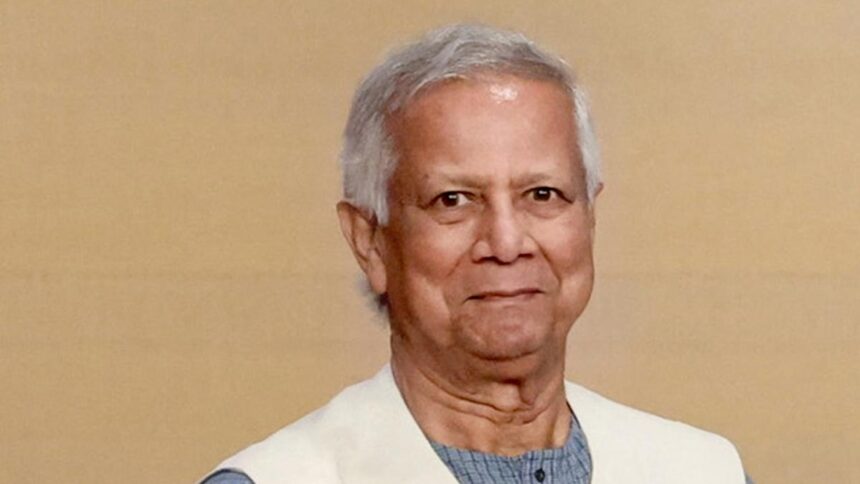
Earlier, the Israeli military said it would also resume allowing airdrops into war-ravaged Gaza as part of attempts to stem the rising hunger. File
| Photo Credit: AP
The Israeli military said Sunday (July 27, 2025) it would pause fighting in three populated areas of Gaza for 10 hours a day and open secure routes for aid delivery to desperate Palestinians, launching a series of steps meant to address a surge in hunger in the territory as Israel faces a wave of international criticism over its conduct in the 21-month war.
The military said it would begin a “tactical pause” in Gaza City, Deir al-Balah and Muwasi, three areas of the territory with large populations, to “increase the scale of humanitarian aid” entering the territory.
The military said it would halt activity in Muwasi, Deir al-Balah and Gaza City from 10 a.m. to 8 p.m. (12:30 p.m. to 10:30 p.m. IST) local time every day until further notice, beginning Sunday (July 27, 2025). The military said it was not operating in those areas, but there has been fighting and strikes in each in recent weeks.
In a statement, the military said it would also designate secure routes that would be to help aid agencies deliver food and other supplies to people across Gaza.
On Saturday (July 26, 2025), the military said it would also resume allowing airdrops into war-ravaged Gaza as part of attempts to stem the rising hunger and on Sunday (July 27, 2025), Israel said that it carried out aid airdrops into Gaza, which included packages of aid with flour, sugar and canned food.
Food experts have warned for months of the risk of famine in Gaza, where Israel has restricted aid because it says Hamas syphons off goods to help bolster its rule.
Images emerging from Gaza in recent days of emaciated children have fanned global criticism of Israel, including by close allies, who have called for an end to the war and the humanitarian catastrophe it has spawned.
Israel said the new measures were taking place while it continues its offensive against Hamas in other areas.
The local pause in fighting came days after ceasefire efforts between Israel and Hamas appeared to be in doubt. On Friday (July 25, 2025), Israel and the U.S. recalled their negotiating teams, blaming Hamas, and Israel said it was considering “alternative options” to ceasefire talks with the militant group.
After ending the latest ceasefire in March, Israel cut off the entry of food, medicine, fuel and other supplies completely to Gaza for 2 ½ months, saying it aimed to pressure Hamas to release hostages.
Under international pressure, Israel slightly eased the blockade in May. Since then, it has allowed in around 4,500 trucks for the U.N. and other aid groups to distribute. The average of 69 trucks a day, however, is far below the 500 to 600 trucks a day the UN says are needed for Gaza. The U.N. says it has been unable to distribute much of the aid because hungry crowds and gangs take most of it from its arriving trucks.
As a way to divert aid delivery away from the U.N., Israel has backed the US-registered Gaza Humanitarian Foundation, which in May opened four centers distributing boxes of food supplies. More than 1,000 Palestinians have been killed by Israeli forces since May while trying to get food, mostly near those new aid sites, the U.N. human rights office says.
Israel has railed against the U.N. throughout the war, saying that its system allowed Hamas to steal aid, without providing evidence. The UN denies that claim and says its delivery mechanism was the best way to bring aid to Palestinians.
The military said the new steps were made in coordination with the U.N. and other humanitarian groups. Much of Gaza’s population, squeezed by fighting into ever tinier patches of land, now relies on aid.
Published – July 27, 2025 11:12 am IST























